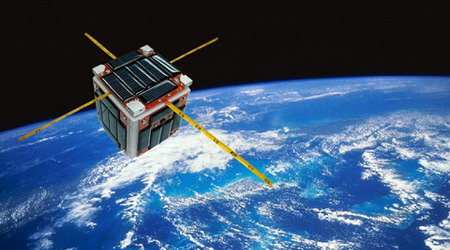
The first made-in-Vietnam satellite, produced by Hanoi-based private telecom firm FPT, will be put into orbit this Saturday from Japan, not with a rocket but dropped from the International Space Station.
The F-1 satellite, produced by FSpace center of FPT University, will be launched from the Tanegashima pad of the Japan Aerospace Exploration Agency at 9:18 a.m. (Hanoi time), news website VnExpress reported Wednesday.
Vu Trong Thu, head of the center, said the launch will be different from the traditional ones in which satellites are attached to rockets and blasted into space.
The new satellite will be launched to the International Space Station, where a robot will place it in space.
Thu said experts from Japan Aerospace Exploration Agency and NASA had agreed that the latter method would allow more small satellites to go into orbit, given that their production has become a worldwide trend.
A similar launch was done for three Russian satellites - Nanosputnik in 2005, SuitSat-1 in 2006 and Kedr in 2011. They were dropped into orbit by ISS astronauts during a space walk, but experts now feel space walking is not safe for both astronauts and satellites.
Thu said he and other members from FSpace had worked with more than 40 rocket companies worldwide but it was hard to find one that accepted working with a small satellite. Prices were also a problem, he said.
“Finally we learned about the launching program for small satellites to ISS. To have a place in the spaceship to the station took a long time as there were more satellites to launch than the ship could afford,” Thu said.
F-1, carrying a small model of Vietnam national flag, will join space with four other small satellites from Japan.
It will fly in an orbit similar to ISS’s, spending 92 minutes on each trip around the earth.
F-1 is a 10 centimeter cube weighing one kilogram. The university center started working on the satellite in late 2008, designing one that can take photos of 640x480 pixels of the Earth and transmit data to the earth station at 1,200 bits per second.
The satellite was brought to Japan for a vibration test on March 14, 2011, with help from professors at the University of Tokyo, who had stopped several other activities to save electricity for the testing.
In November 2011, F-1 was sent to the US for safety tests by FPT’s partner NanoRacks.
Thu said once F-1 works effectively, Vietnam can be confident in its space technology capabilities to use satellites for defense and rescue purposes.
“F-1 might open a new road to develop space science and technology, which is still in its nascent stage in Vietnam.”
Vietnam early this month started to use its second satellite Vinasat-2, four years after it launched the first one Vinasat-1. Both were built by the US-based Lockheed Martin Corporation.

 Previous page
Previous page Back to top
Back to top







